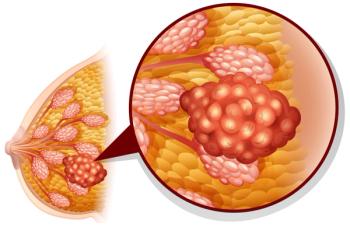
Other Considerations for Better Long-Term Outcomes in Prostate Cancer
Increasing age, higher Gleason scores, and higher pathologic stages are predictors of mortality in patients with prostate cancer, according to an expert from Dana-Farber Cancer Institute.
In a conversation with CancerNetwork® at the
Moreover, based on data illustrating that a PSA level of more than 0.25 ng/ml when initiating radiotherapy after radical prostatectomy correlated with a higher risk of mortality, D’Amico stated that insurers should reimburse PSMA PET scans at lower PSA levels to ensure uniformity and equity among patients.
D’Amico, a professor and chair of genitourinary radiation oncology at Brigham and Women’s Hospital and Dana-Farber Cancer Institute, also described how other factors including Gleason scores and pathologic staging could affect patient outcomes.
Transcript:
The major finding was the PSA cut point at which to start salvage radiation and hormonal therapy. Other findings were what was expected. Other factors that predicted for mortality was increasing age, as well as other pathologic factors that you would expect: higher Gleason scores and higher pathologic stage.
[Nothing] else was surprising; the key was the PSA cut point of 0.25 ng/mL and that it wasn’t what you’d expect—that is with higher PSA levels, maybe the risk of death would go up. It really wasn’t that way. It wasn’t a continuous variable. It was a step function. At 0.25 ng/mL, the risk increased by 50%. All the way up to 0.5 ng/mL, that risk was still approximately 50%.
The other thing that was important is that we adjusted for the time-dependent use of hormonal therapy. That's important because we know that if you do hormonal therapy sooner or later in the course it can affect long-term cancer control outcomes. That, of course, was also significant. People who needed hormonal therapy earlier were people who maybe didn't do as well.
I'm hoping that, first, insurers will start to reimburse PSMA PET at lower PSA levels so there is uniformity and that there isn't inequity between one person who has a certain insurance vs one who has a different insurance. The second thing is that it will encourage physicians to start salvage therapy and perhaps try to get the PET earlier in the post-operative course before the PSA gets to 0.25 ng/mL.
Reference
Tilki D, Chen M, Wu J, et al. Prostate-specific antigen level at the time of salvage therapy after radical prostatectomy for prostate cancer and the risk of death. J Clin Oncol. Published online March 1, 2023. doi:10.1200/JCO.22.02489
Newsletter
Stay up to date on recent advances in the multidisciplinary approach to cancer.





















































































